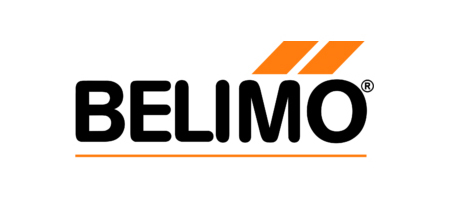Many users may not be aware that it is possible to run SAP for Retail in parallel with a standard SAP R/3 system. Learn how, with specific examples of integration points and descriptions of solutions.
Key Concept
SAP for Retail is an industry-specific solution set that helps companies manage global retail store chains. It provides a suite of retail-specific applications, including merchandise management and planning, workforce management, point-of-sale data management, demand forecasting and replenishment, merchandise and assortment planning, master data management, and even radio frequency identification (RFID).
R/3 acts as the system of record and
the main system for product life cycle
management, supply chain processes, coordination
with other partners, and collation of
all financial data. SAP for Retail coordinates
one of the distribution channels for
your company and helps manage your global
retail chain of stores. I’m going
to discuss some of the retail business
processes and focus on the integration
points between R/3 and SAP for Retail.
I will not go into great detail on integration
with functionalities such as Point of
Sale (POS) or Internet Transaction Server
(ITS) software.
SAP for Retail uses its own set of
terms and related transaction codes. Table
1 shows a few major differences
in terms and how they map to R/3. To
go to the retail-specific menu, use transaction
code W10T in SAP for
Retail.
| SAP for
Retail |
R/3 |
| Article (MM41, MM42, MM43) |
Material (MM01, MM02, MM03) |
| Site (WB01, WB02, WB03) |
Plant (SPRO - config) |
| Merchandise category hierarchy
(CLWM, etc.) |
Product hierarchy (SPRO - config) |
| Merchandise category (WG21,
etc.) |
Material group (SPRO - config) |
| Replenishment planning (RP) |
MRP |
| Assortment planning |
n/a |
| Retail Info Structure (RIS:
MCG3, MCGH, etc.) |
n/a |
|
| Table
1 |
Transaction
codes for SAP for Retail |
Note
SAP for Retail is also applicable to mySAP ERP Central Component (ECC) systems, with which it is delivered. This article addresses integration with R/3 only.
Organization Structure
As I mentioned, R/3 is the system of
record in the implementation. SAP for
Retail transactions, at the end of the
process, must move to R/3. To enable
this, the organization structure for
the R/3 retail instance is set up along
similar lines to the R/3 instance. In
the example in Figure 1,
the US has one plant 5001 under
company code 0050 and
purchasing organization 5001 in
R/3. Therefore, all retail stores in
the US also have one company code 0050 and
purchasing organization 5001 in
SAP for Retail.

Figure 1
Typical organizational structure for SAP for Retail
Material Fetch Process
To enable communication between R/3
and SAP for Retail in the same company,
the material numbers in R/3 and the article
numbers in SAP for Retail have to be
the same for the same physical materials.
SAP for Retail uses ALE to transfer and
distribute data. This technique is the
same for all SAP applications and is
used in SAP for Retail to distribute
different kinds of master data and transaction
data via defined interfaces known as
IDocs. A standard ALE infrastructure
is assumed.
The first step is to define the port
for R/3 (or for any other system with
which you are integrating). Do this via
transaction WE21 (ports)
in IDoc processing. WEDI is
the transaction code for the ALE/EDI
workbench. Your functional consultant,
Basis team, or EDI expert can perform
this step.
The next step is to get the material
master data (contained in transaction MM03)
from R/3 for any material that also
needs to be sold in the retail stores.
The material data in SAP for Retail
has to be similar to the data in R/3,
as the procurement for the materials
is handled from R/3 (Figure
2).

Figure 2
Document flow between SAP for Retail and SAP R/3 to create an article master in retail similar to the material master in R/3
In this case you initiate a request
for the material in SAP for Retail.
Use the standard SAP IDoc MATFET (material
fetch) from the SAP for Retail instance
to send the request for the material
details from R/3. The MATFET IDoc
in Figure 3 has the
material number details only.

Figure 3
MATFET IDoc requesting material from R/3
The SAP standard function module IDOC_INPUT_MATFET processes
the MATFET IDoc. This
results in the R/3 modules (Materials
Management [MM], Sales and Distribution
[SD], or Financials [FI], for example)
picking up all the details for the
material number (contained in MM03)
and compiling them in an IDoc called MATMAS (material
master data). MATMAS is
sent automatically from R/3 to SAP
for Retail based on the ALE port configurations
and Partner Profile set-ups (WE20). MATMAS has
the relevant fields with data similar
to the corresponding fields in the
material master in R/3 (Figure
4). If you look closely at
the various segments in the IDoc, you’ll
see that each segment represents data
from various master data tables (e.g., MARA [general
master data], MAKT [material
master description], MBEW [accounting
data], and MARC [production/MRP
data]).

Figure 4
MATMAS IDoc with relevant material master data
Standard function module IDOC_INPUT_ MATMAS01 processes
MATMAS IDocs
in SAP for Retail. You use this function
module to create a material master.
You can also change the function module
slightly to map the fields in MATMAS to ARTMAS IDocs.
Function module IDOC_INPUT_ARTMAS processes ARTMAS IDocs
and creates the article master.
Procurement Process
The logistics processes with the
vendors are mapped out in R/3. In my
example I procure all material from
R/3. It is possible to replicate the
logistics processes on SAP for Retail
as well. However, this implies extra
data maintenance effort on two instances.
In my example, R/3 also manages all
the other channels of distribution,
such as resellers and Web stores, so
it makes sense to have the logistics
set up only on the R/3 instance. SAP
for Retail acts as a customer to R/3,
and the purchase orders (POs) on SAP
for Retail move to R/3 as sales orders. Figure
5 shows the procurement process.

Figure 5
Linkages between SAP for Retail and R/3 click here to view a larger version of this image
Note
In the transfer and distribution of data by ALE, the field selection you defined in Customizing for the Article Master (in Maintain Field Selection for Data Screens) is interpreted in the same way as in online mode. Fields defined as not ready for input in Customizing for the Article Master are not transferred. The system issues a corresponding warning. Fields defined as required fields are checked. To check configuration, use transaction OMS9 (maintain field selection for data screens).
You can use several standard SAP functionalities,
such as merchandise assortment planning
or forecasting (with or without seasonality)
with replenishment run in MM or Materials
Requirements Planning (MRP) runs in
Production Planning (PP) to determine
requirements and create purchase orders
in SAP for Retail per the retail stores’ requirements.
You send these requirements (purchase
orders) to R/3 as sales orders. It
is an interesting challenge for the
integration of the two SAP instances.
Next I will discuss the messages used
to exchange information between R/3
and SAP for Retail and the set-up for
this process.
Configure the retail stores as customers
in R/3. In this scenario, map the stores
to only one customer. Several ship-to
parties are linked to the customer,
with each ship-to party representing
a different store (Figure 6).
This enables the vendor to send an
850 EDI IDoc to MM manually to have
the goods shipped directly to the store
from the vendor location based on the
ship-to party information.

Figure 6
Partner functions screen of customer master showing individual retail stores mapped as separate ship-to parties click here to view a larger version of this image
The POs in SAP for Retail create the
output message NEU (message
type ORDERS). Standard
function module IDOC_OUTPUT_ORDERS processes
the POs. This message is processed
by the standard program and sent across
to vendor number P9999. P9999 is
a dummy vendor for the plant 5001.
The R/3 system recognizes the IDoc
as coming from the SAP for Retail system.
It processes the IDoc into a sales
order by the inbound process code ORDE (functional
module IDOC_INPUT_ORDERS)
for inbound message type ORDERS,
as shown in Figure 7.

Figure 7
Process POs with inbound message type ORDERS click here to view a larger version of this image
The rest of the flow is as explained
in Figure 5. You can follow the standard
procurement process for SAP for Retail
requirements in R/3. The vendor/OEM
or plant gets the requirement from
the sales order created in SAP. Once
the physical goods are ready, they
are shipped directly to the retail
store based on the ship-to address.
The delivery in R/3 creates a Advanced
Shipping Notification (ASN) in SAP
for Retail. When the store receives
the product it posts a goods receipt
(via ITS) for the purchase order created
in SAP for Retail. That completes the
procurement of goods at the retail
store (both physically and in the SAP
for Retail system). The billing and
invoicing are proxy transactions that
are adjusted in R/3, which is the financial
system of record.
Data Synchronization and
Flow Between Systems
One critical aspect of the integration
of the systems is to have the changes
in R/3 reflected in SAP for Retail.
The system provides standard IDoc types
for exchange of information on all
types of master data (e.g., info records,
material master changes).
You need to send all sales data to
the R/3 system and record it. The financial
consolidation between systems in the
particular scenario I am discussing
happens by custom interfaces. All sales
data in the various stores is stored
in Info Structures in SAP for Retail.
The Retail Information Structure (RIS)
used for this purpose is S120. This
data is sent over to R/3 in a custom-built
interface. Relevant debit and credit
entries are transferred into the R/3
system. This is an automatic process
based on a daily background job for
the interface that collects the data
and sends it across to R/3. In R/3,
a job is triggered when the file with
the data comes in, and it processes
the debit or credit entries.
Additional Integration Hints
Middleware. Sales
data flows from POS software at the
retail front end to SAP for Retail
via non-SAP middleware. The middleware
is custom built, but SAP provides easy
integration with use of BAPIs and related
configuration settings in SAP for Retail.
You complete the relevant configuration
for POS with transaction SPRO and
menu path Sales and Distribution>POS
Interface. Note that a flow
of article data and prices goes from
SAP for Retail to POS as well.
Internet Transaction Server
(ITS). ITS supports the
Web interface you can use to access
SAP for Retail instances by stores
globally. The stores log into R/3
via the Internet and post transactions.
ITS can manage all retail store activities
such as goods receipt, transfer of
goods between storage locations,
and posting physical inventory documents.
You configure the ITS transactions
that determine the relevant movement
types and product catalogs in the
IMG. You can also use SAP NetWeaver
Portal in place of ITS if you have
the functionality.
Trilokesh Satpathy
Trilokesh Satpathy, PMP, is a consultant with Infosys Technologies Limited with more than six years of SAP consulting experience spanning automobile and computer manufacturing companies. He holds a bachelor’s degree in mechanical engineering and a post-graduate degree in business management.
You may contact the author at editor@scmexpertonline.com.
If you have comments about this article or publication, or would like to submit an article idea, please contact the editor.













